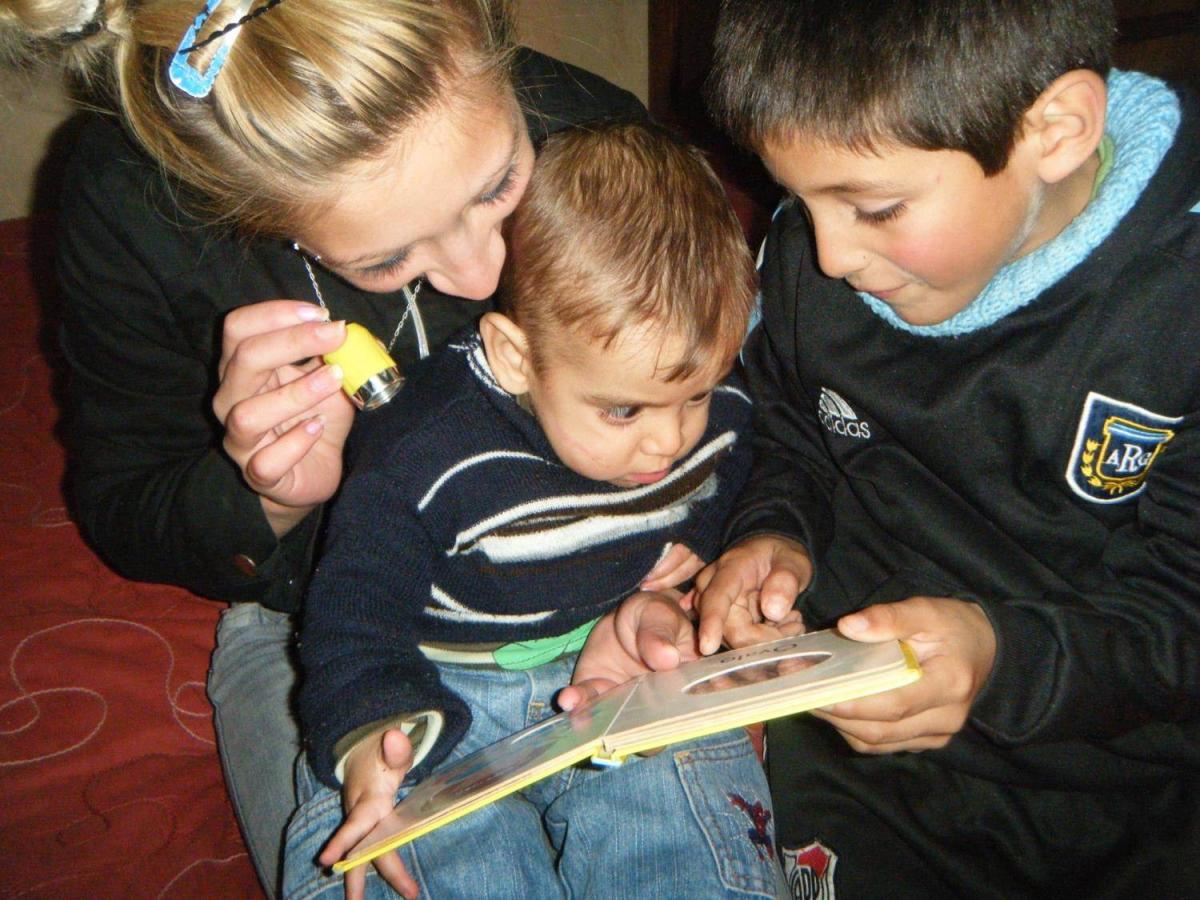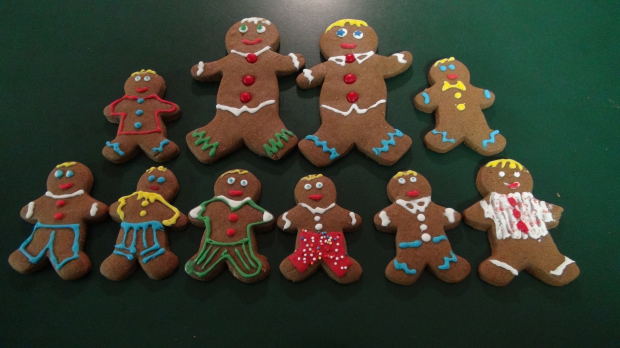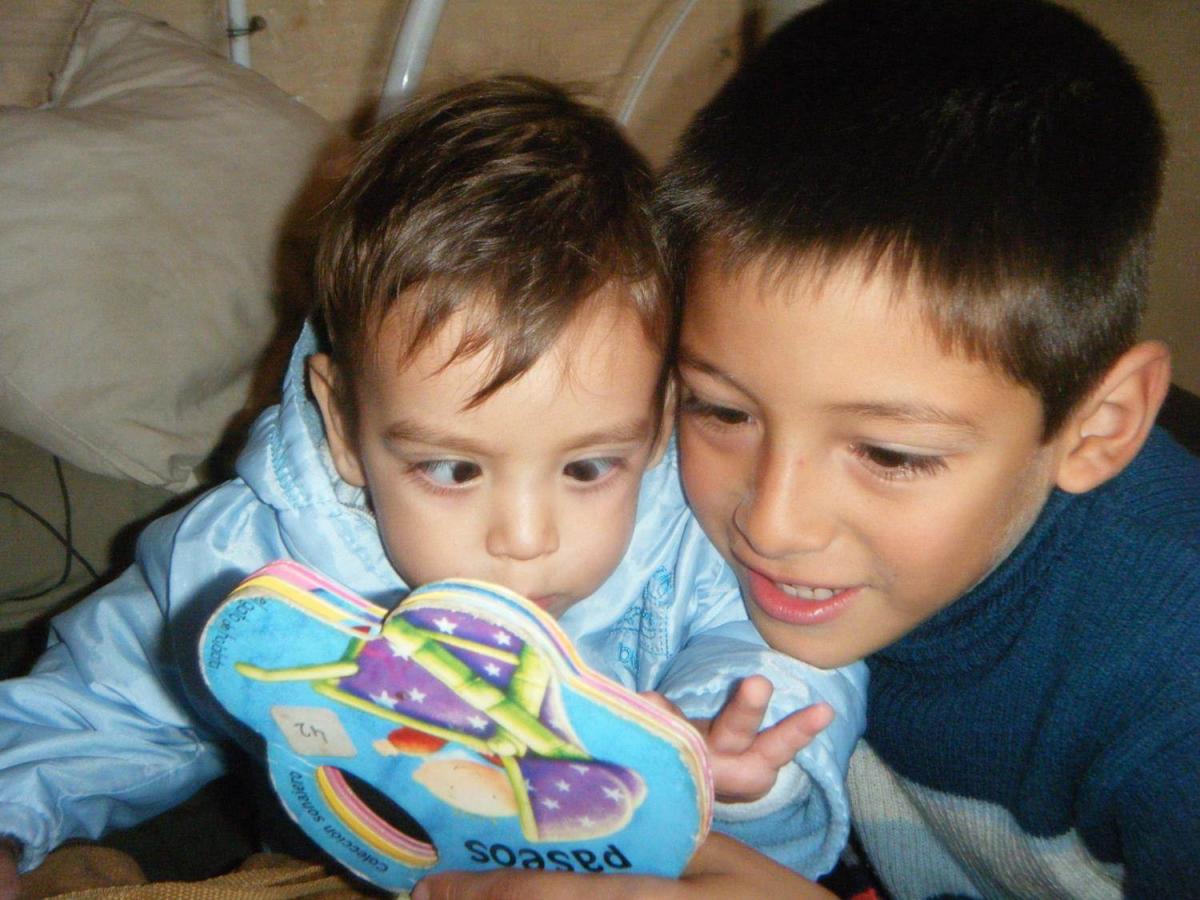10 Tips to Make Reading Aloud Part of Your Family's Holiday Tradition!

The shopping is done and the presents are wrapped. The next thing to do is to put away the lists and make time to read aloud with your family. This is something that can be enjoyed by everyone at any age and can include songs, poems, rhymes. Here are some tips to be sure it is an enjoyable time for all!
-
Select books that are interesting and fun for everyone.
Books that include rhyme and whimsy can be fun for readers of many ages. Young children or those with multiple disabilities often enjoy stories with repeated lines or predictable refrains. (Think "Brown bear, brown bear"...) Children often enjoy books that are about familiar experiences or that have their names as part of the storyline.
-
Make it a multi-sensory experience.

Include scents, sound effects, and even tastes of things to illustrate the story. Are you reading a book about a gingerbread man? What a great opportunity to smell those spices and bake the cookies!
-
Use real objects to illustrate the story.
If you have been reading aloud with young children or those with multiple disabilities, you may already be familiar with story boxes. These are collections of objects that are used to illustrate a story and make ideas clear to children who are blind or visually impaired. For example, a story about Santa Claus would be greatly enhanced with a Santa cap, big boots, a fake white beard, and a big belt buckle. Don't forget the sleigh bells and a pair of antlers for the reindeer!
-
Create your own holiday books.
 Some of the best holiday books are ones that you make yourself! This is a nice way to include a child who is blind or visually impaired, including those with multiple disabilities. Choose an experience that you have enjoyed together and create a story about it. This might be something like trimming the Christmas tree or making a cup of hot chocolate. Include tactile symbols to represent different parts of the experience, such as a small piece of a pine branch for the Christmas tree or some mini-marshmallows from making a up of hot chocolate. Siblings or grandparents can help to write down the story, as needed. Add print and braille, and invite your child to share the book with the rest of the family!
Some of the best holiday books are ones that you make yourself! This is a nice way to include a child who is blind or visually impaired, including those with multiple disabilities. Choose an experience that you have enjoyed together and create a story about it. This might be something like trimming the Christmas tree or making a cup of hot chocolate. Include tactile symbols to represent different parts of the experience, such as a small piece of a pine branch for the Christmas tree or some mini-marshmallows from making a up of hot chocolate. Siblings or grandparents can help to write down the story, as needed. Add print and braille, and invite your child to share the book with the rest of the family!
-
Minimize external distractions, so that everyone is focused on the activity at hand.
Part of what makes this a fun and special time is that each person in the family is really engaged. Turn off your cell phones and the television and be sure that your attention is really on the experience of reading aloud. You are a role model to your children and if they see you engaged in reading, they will be too!
-
Be sure that everyone is physically comfortable.
Part of the enjoyment of reading aloud is sitting comfortably together, so that you are close by and actively engaged in the experience together. For children with multiple disabilities, this means that they should have adequate support if they are unable to sit up independently. Children who use sign language to communicate should be seated in such a way that they can use tactile sign or easily see the person signing the story to them.
-
Show your children that you enjoy and value the time together too!
If you let everyone know that you're looking forward to reading together and you invite them to join you with excitement in your voice, the experience is more likely to engage them. This is also related to minimizing distractions: if you're interrupting the story every few minutes to check your cell phone, you child will be aware that you are not fully engaged in reading together.
-
Encourage everyone to participate at his or her own level.
Spending time toge ther as a family often means finding a way that each person can be part of something in the way that works best for them. If there are multiple children of different ages, this is especially true. If you child is a reader, invite him or her to read the story. A little one may wish to help turn the pages. An older child may wish to augment the story with a creative new ending. Some children may enjoy thinking of ways to add sound effects. Not everyone needs to be part of reading aloud in exactly the same way.
ther as a family often means finding a way that each person can be part of something in the way that works best for them. If there are multiple children of different ages, this is especially true. If you child is a reader, invite him or her to read the story. A little one may wish to help turn the pages. An older child may wish to augment the story with a creative new ending. Some children may enjoy thinking of ways to add sound effects. Not everyone needs to be part of reading aloud in exactly the same way.
-
Don't worry if your child wants to read the same book over and over.
Many children request old favorites to be repeated again and again. While this may not be your first choice, remember that encouraging a love of reading, as well as enjoying the time together is really the most important thing sometimes.
-
Set aside a special time each day to read aloud.
The holidays can be busy, but it's important to make the time to read aloud together. Invite visiting friends and relatives to join you for a story or ask them to read or tell one of their favorite stories.
Most important of all, have fun and enjoy being together!
For more ideas like this, see also Shared Storybook Reading
See tips from National Braille Press for reading aloud.

